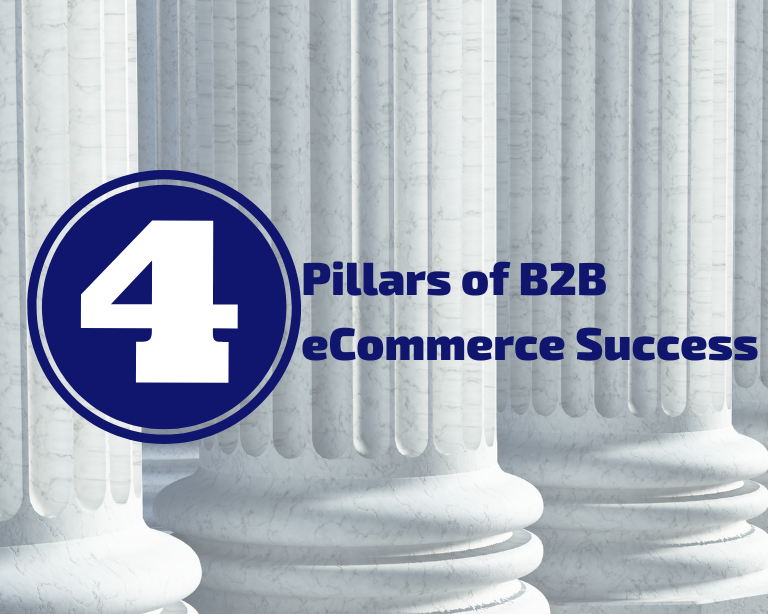Message Queues (MQ) or Message Brokers (MB) are used when guaranteed delivery of information or data is of the highest importance and extremely beneficial for mission critical eCommerce platforms and high-volume transactional situations between multiple systems, services, or data repositories. The benefit of using MQs over HTTP APIs intensifies when multiple integrations (5 or more) are required as when multi-publishing is essential, persistence is mandated, and scalability is indispensable. MQ brokers can easily be scaled to handle millions and billions of requests reliably! Additionally, with this approach you have only one place to look when communication goes wrong rather than wondering what happened. When load balancing is correspondingly implemented, you now have a built-in “Fire and Forget” eCommerce strategy that is the envy of your competition.
Message Queues (MQ) are the Integration Fabric of choice that connect all applications, services, data, processes, devices, and user experience within a single, dynamic web-enabled architecture. The significance of using MQ software is to gain an increase of integration performance and scalability when orchestrating the information exchange among multiple applications and data sources. MQ allows web servers to respond to requests instantly and not forced to execute resource-heavy procedures that will delay response time. Message Queuing technology enables applications running at different times to communicate across heterogeneous networks and systems that may be temporarily offline to assure availability and improve accuracy.
Message Queuing is recommended to distribute a message to multiple application or to balance loads between servers. A message can include any kind of information about a process or task that should start on another application (which could even be on another server), or it could be just a simple text message. The Message Queue (MQ) software stores the messages until a receiving application connects and takes a message off the queue. The receiving application then processes the message.
One of the key features of messages compared to HTTP requests is that they allow for fully asynchronous communications. Unlike Rest APIs message streaming is better at providing notifications when new messages arrive. When combined together, Rest APIs s enable consuming apps to integrate easily with an HTTP API, while message streaming allow consumers to be notified of changes without needing to check with the Rest API first. This can be a powerful combination that can satisfy use cases that exist today, while allowing emerging use cases to be handled in the future — all without modifying existing systems to accommodate new solutions.
At one of the largest Farm Equipment Dealers, a message queue (MQ) system is being used to maintain a steady flow of data between their PIM/MDM System, In-House Websites, ERP System, Mobile Applications, and leading third-party industry marketplaces like Tractor House. The result is sub-second performance, easy extensibility to include top new sources, and virtually no ongoing maintenance is required.
The most important information relates to quality product, patient, clinical, and customer data. An example is utilizing PIM/MDM solutions and configuring those to meet the specific data models that drive the clients’ ability to best serve their customers buying behavior increases revenue, often doubling it, Implementing MQ in these situations has allowed them to avoid the technical debt associated with point-to-point APIs. This technical debt included network, hardware resources, and expensive continual coding maintenance on each API.
Embedding an integration bus or broker in the technology stack of a critical eCommerce solution delivers the added value of being able to accommodate large SKU throughput between multiple storefronts, Product Information Management Systems (PIM), CRM’s, as well as ERP’s without having to sacrifice speed, accuracy or information security. MQ adds flexibility on different end-point types that can be instrumented (be that traditional WSDL 2.0, REST API or Webhooks), while standardizing the message structure and contents within the message queueu system.
Here, especially RabbitMQ is extremely beneficial with most mission critical eCommerce platforms (PimCore. Magento, Big Commerce, etc.). This broker is completely Open Source providing exponentially scalable, asynchronous messaging between extensive applications. In conjunction with its clustering and flexible routing capabilities, you can successfully implement RabbitMQ as a message broker for a multitude of B2B e-commerce solutions.
CSS Commerce has deployed RabbitMQ as a Message Queue system for several customers. Our eCommerce and Integration Fabric Practice focuses on delivering state-of-the-art Web and Digital experiences primarily for B2B manufacturing and distribution clients. These extraordinarily successful clients have multiple back-end data sources, as well as the necessity to syndicate to many front-end channels including Amazon, websites, clients and vendor systems, and the list goes on. Performance and simplified ongoing maintenance with RabbitMQ are key drivers to making our client’s employees, customer, suppliers, and prospect’s digital experiences exceptional. We support our clients from the initial data modeling, PIM/MDM selection, implementation, front-end commerce and syndication, and Advanced Predictive Search implementation. Of course, integrating these systems extraordinarily well is critical to the accomplishment of each client eBusiness success. RabbitMQ messaging the recommended, cost effective, easy to implement, and maintain Integration Fabric solution for our customers.
For a free quote on how we can help you and your business, contact us right here.



